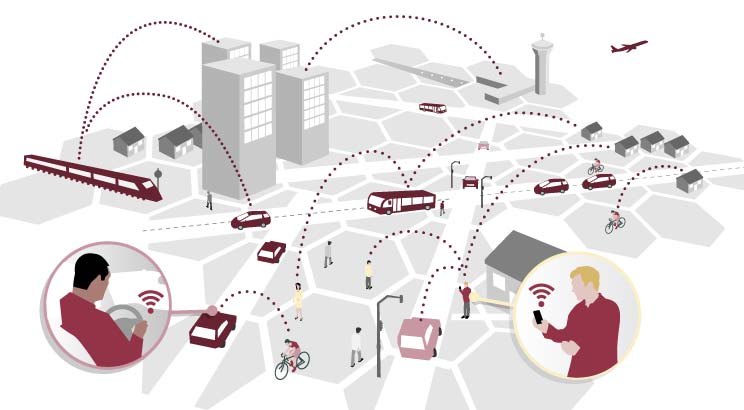Our Blueprint for Mobility

At Ford, we believe that the issue of urban mobility requires the same level of attention and determination that we have put toward developing solutions for the environmental challenges faced by our industry. Where environmental sustainability is concerned, we have been making great strides with new vehicle technologies, alternative fuels and vastly cleaner solutions.
Our Blueprint for Mobility mirrors our approach to our Blueprint for Sustainability, establishing a scientific foundation based upon an analysis of population growth, urbanization and other key societal and economic trends.
Our goal is to make mobility affordable in every sense of the word – economically, environmentally and socially.
In the near term (roughly the next five to seven years), technologies – including some that are already in vehicles – will continue to improve. The proliferation of digital maps and cell-based communications will provide better driver information and entertainment features, while in-car mobile communications and driver interfaces will become more intuitive. These systems will be able to proactively alert drivers to traffic jams and accidents. Increasingly, our vehicles will talk to one another, and the mountains of data they generate will no longer be self-contained.
In the mid-term period (to about 2025), the amount of data that will flow to, from and through cars will continue to increase. Vehicle-to-vehicle and vehicle-to-infrastructure technologies will enable improved safety while allowing more vehicles to share the road. New technologies will provide more sophisticated systems of semi-autonomous driving and “auto pilot” functions.
Meanwhile, the first efforts to integrate various pieces of the transportation network will begin, allowing cars to plug into public databases that recommend alternative transportation options such as trains, buses and carpools. Early versions of these advances are already being designed and tested.
In the long term, the urban transportation landscape will be radically different from what we know today. By 2050, we will have a true network of mobility solutions, and automobiles will likely look very different than they do today.
The Blueprint for Mobility establishes goals for the near, mid and long term, as follows:
5–7 yearsNear Term |
2017–2025Mid Term |
2025+Long Term |
|---|---|---|
Ford Motor Company to be at the forefront of developing increasingly intuitive in-car mobile communications options and driver interfaces that proactively alert drivers to traffic jams and accidents |
The introduction of semi-autonomous driving technology, including driver-initiated “auto pilot” capabilities and vehicle platooning in limited situations – technologies that will provide improved accident avoidance and driver assistance features, but allow the driver to take control, if needed |
A radically different transportation landscape in which pedestrian, bicycle, private car, commercial and public transportation traffic will be woven into a single connected network to save time, conserve resources, lower emissions and improve safety |
Developmental projects such as the vehicle-to-vehicle warning systems currently being explored at Ford’s European Research and Advanced Engineering Centre in Aachen, Germany, and intelligent speed-control features, to grow in capability |
Significantly more interaction between individual cars on the road through the utilization of ever-increasing computing power and numbers of sensors in vehicles, potentially helping to reduce the number of accidents at intersections and enabling limited semi-autonomous and autonomous highway lane changing and exiting |
Arrival of smart vehicles capable of fully autonomous navigation, with increased “auto pilot” operating duration, plus the arrival of autonomous valet functions, delivering effortless vehicle parking and storage |
The delivery of a better-connected, safer and more-efficient driving experience with limited autonomous functions for parking and driving in slow-moving traffic – building on existing Ford features including Active Park Assist, Adaptive Cruise Control and Active City Stop |
The arrival of vehicle-to-cloud and vehicle-to-infrastructure communications that contribute to greater time and energy efficiency by enabling vehicles to recommend alternative transport options when congestion is unavoidable and to pre-reserve parking at destinations |
Development of a true network of mobility solutions, with personal vehicle ownership complemented by greater use of connected and efficient shared services, and completely new business models contributing to improved personal mobility |
Further development and defining of new vehicle ownership models, as already demonstrated through Ford’s collaboration with Zipcar, the world’s largest car-sharing and car club service |
The emergence of an integrated transport network, featuring cars plugged into public databases |
|
New city vehicle options, as more and more one-, two-, and three-passenger vehicles are introduced to help maneuver on city streets |
